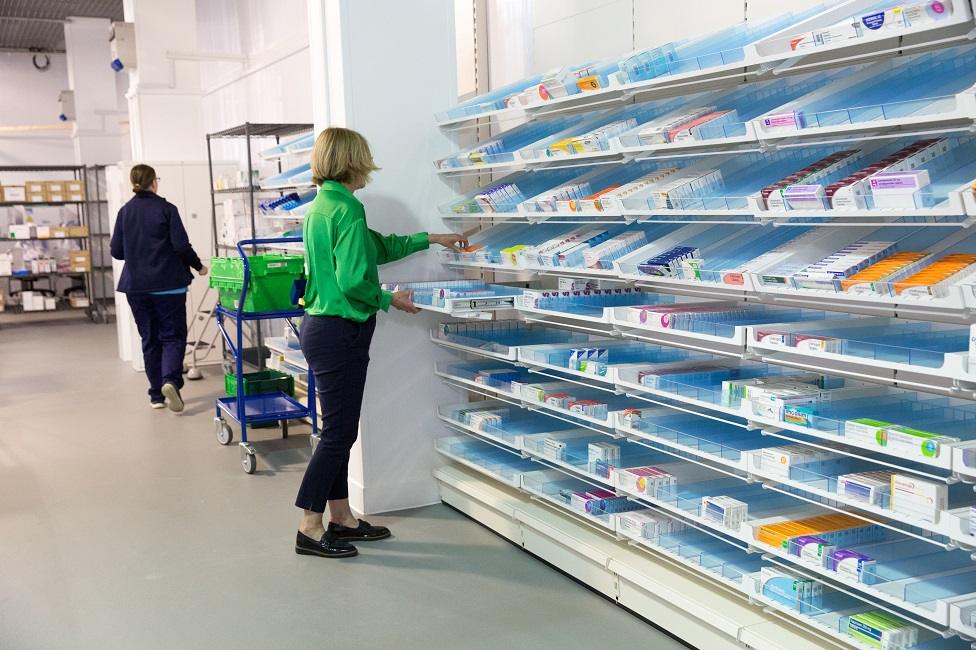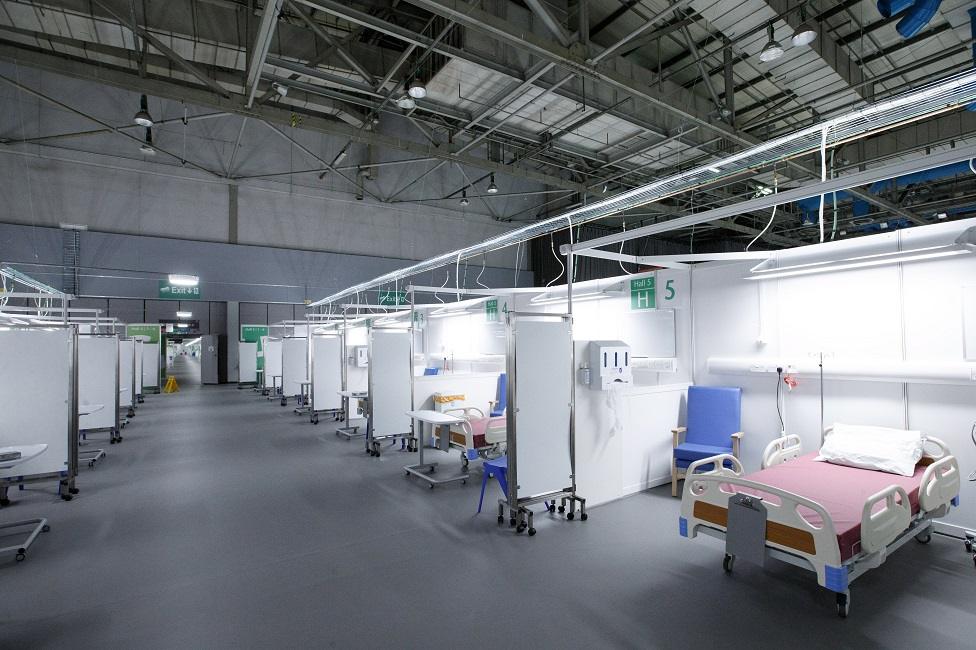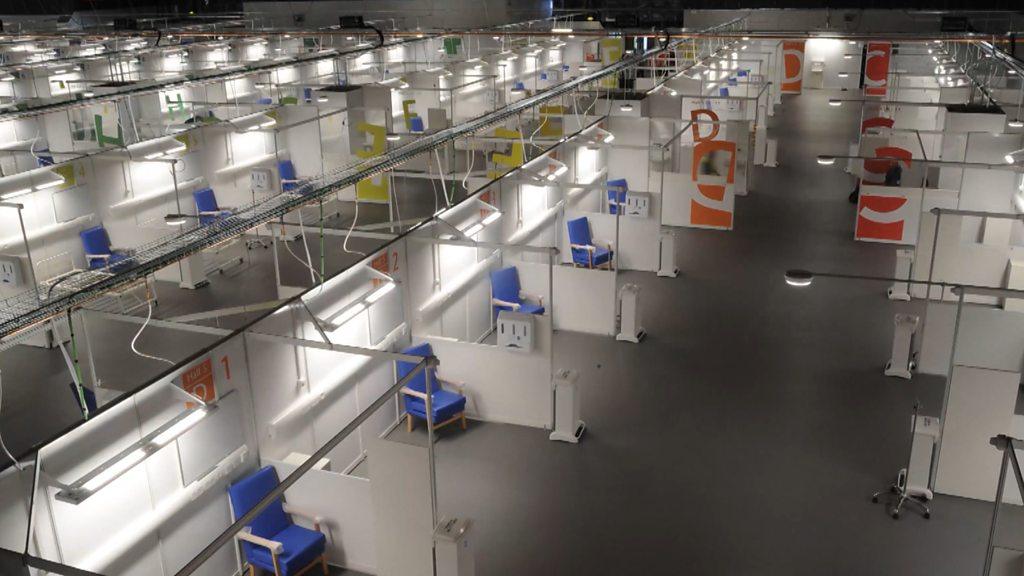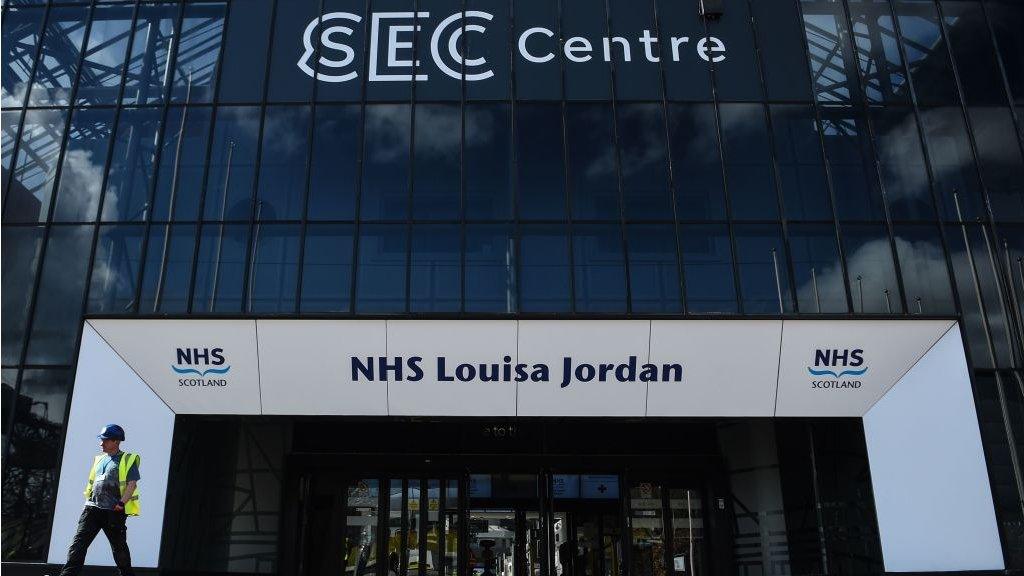Coronavirus: New virus hospital 'operational for at least five months'
- Published
- comments
NHS staff have applauded the contractors who built the new NHS Louisa Jordan.
Scotland's new temporary coronavirus hospital will be available and operational for at least five months, its chief executive has said.
The £43m NHS Louisa Jordan facility at the SEC campus in Glasgow is now ready to receive Covid-19 patients.
It will provide up to 1,036 additional beds to support the pandemic response.
It is hoped the hospital will not be needed, as ongoing lockdown measures slow the rate of transmission of the virus in Scotland.
But chief executive Jill Young says staff will be available to help the NHS "for as long as we are needed".
Coronavirus: Timelapse of Scotland's newest hospital being built
She told BBC Radio's Good Morning Scotland programme: "The timeframe at the moment is five months for us, but clearly with the option to extend that if it is required.
"We will be looking at a decommissioning strategy but there are no plans or dates for that at the moment."
Construction of the hospital began on 31 March after the British Army conducted a feasibility study. The work took 18 days to complete.
Ms Young said NHS Louisa Jordan was now "fully functioning", with all the facilities available at a normal hospital - including a pharmacy, CT scanner, and cleaning and catering teams.
Many of the staff are student nurses, junior doctors and returners to the NHS.

Facilities at the hospital include a pharmacy
Ms Young said that more than 100 staff were at the hospital last week for training and induction.
The facility will only be for Covid-19 patients who are aged 18 years or older.
It will be for patients who do not need intensive care - or who were recovering after being in intensive care.
"Clearly though, we have made provision for high dependency here because we have to take account that some patients may deteriorate after they're here," Ms Young said.
"We have the ability to stabilise them and get them returned back by ambulance to an appropriate critical care unit."
The hospital opening comes as First Minister Nicola Sturgeon confirmed that a further 12 people had died in hospital after testing positive for Covid-19.
Monday's figures showed that the death toll had risen to 915.
There were 263 new positive tests for the virus in the past 24 hours, taking the total to 8,450.
A total of 1,809 patients are in hospital with suspected or confirmed Covid-19, with 169 being treated in intensive care.
'Building up testing'
During her daily media briefing, Ms Sturgeon was asked by BBC Scotland's Lisa Summers if the £43m cost of the hospital could have been spent on something else, such as testing.
The first minister said the government was building up testing - including surveillance testing - and the challenges were not due to a lack of money.
"I fervently hope we never have to treat any patients in the Louisa Jordan," Ms Sturgeon said.
She added that she would rather invest the money in the temporary hospital and not need it than not do so.

Inside Scotland's newest hospital


Only a matter of weeks ago, I could have been at Glasgow's SEC for a conference or a concert.
But standing here today in the middle of hall five in the conference centre, I am in a fully-functioning, hospital. There are cubicles with beds, monitoring equipment, PPE, portable X-ray equipment.
It's all here. But there are no patients.
The plan is to be able to mobilise within 48 hours should Scotland's hospitals reach capacity. Unlike the Nightingale in London, NHS Louisa Jordan has been designed to treat Covid patients who are recovering.
The hospital has intensive care capacity with ventilation if required, but it is not the expectation that the most critically ill will need to be treated here.
It might be, in time, that the Louisa Jordan will have a role to play in freeing up other hospitals to get back to day-to-day duties. To start reintroducing treatments that are currently on hold.
But for now it is on standby with a hope it will not be used.

Louisa Jordan in numbers
23,000 square metres of flooring have been laid
more than 1,000 bed bays have been erected
more than 8,000 pieces of medical equipment have been ordered
35,000 metres of network cabling have been laid for the nurse call system
135,000 metres of cabling for lighting and power sockets have been laid
a new bespoke system to ensure oxygen supply to every bed has been put in place with 1,400 medical gas outlets

A SIMPLE GUIDE: How do I protect myself?
AVOIDING CONTACT: The rules on self-isolation and exercise
HOPE AND LOSS: Your coronavirus stories
LOOK-UP TOOL: Check cases in your area
VIDEO: The 20-second hand wash

- Published19 April 2020

- Published19 April 2020
